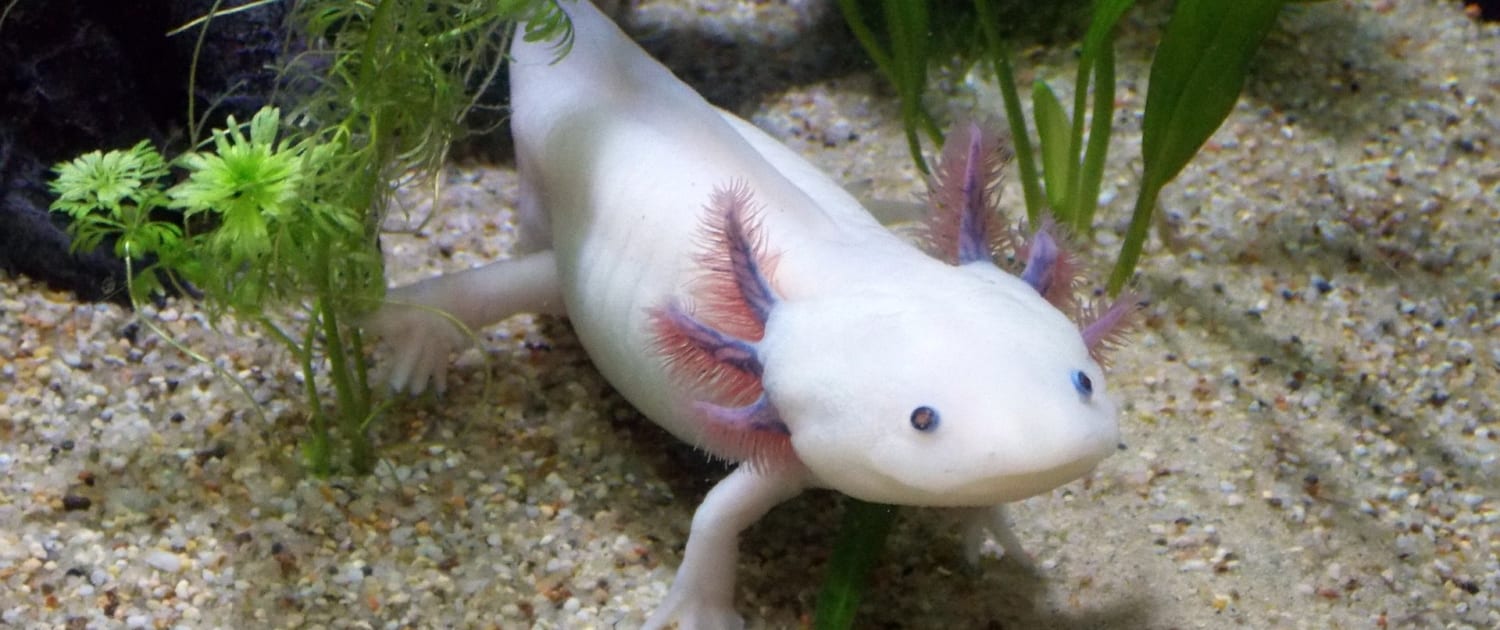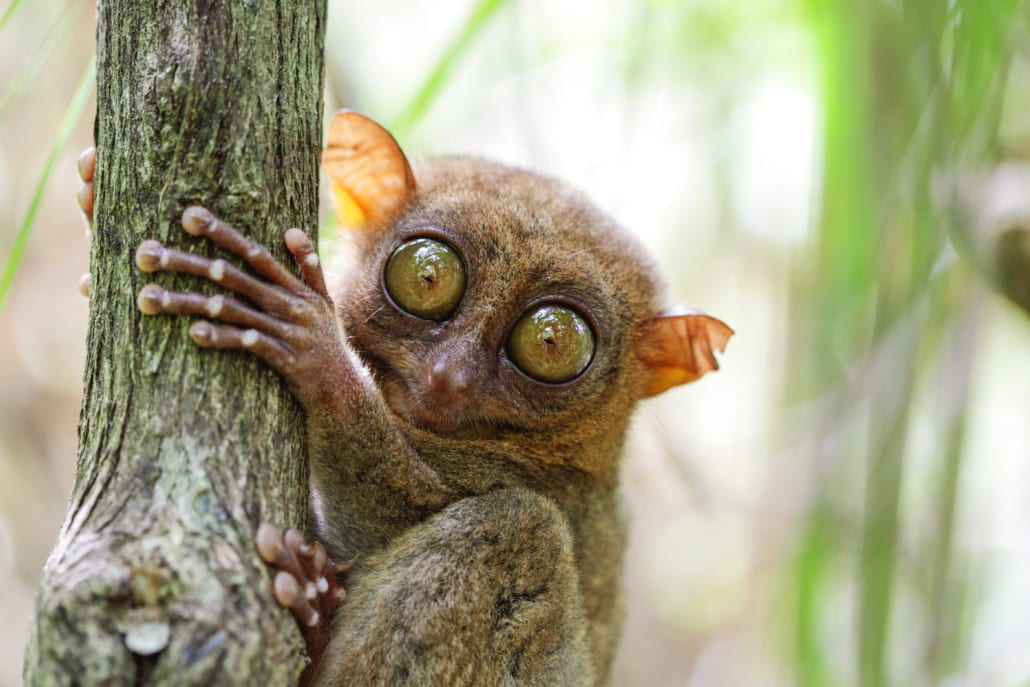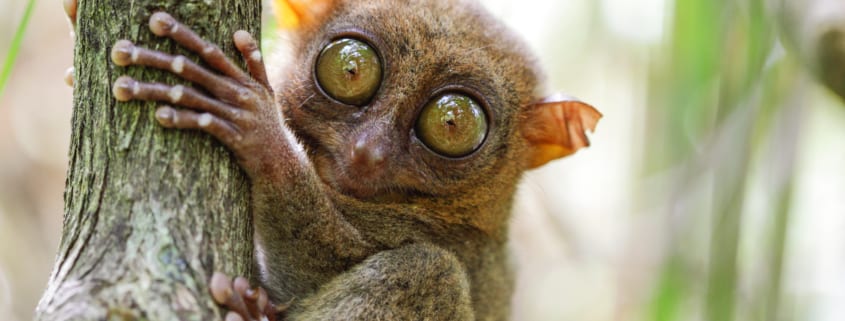Use Technology to Think Like a Tiny Primate
Conservation and animal rights advocates have always anthropomorphized nonhuman animals to inspire empathy. And for good reason: it’s hard to look into the eyes of a sad pup while Sarah McLachlan sings and not feel a kinship with the creature.
But those clips always seemed shallow, at least for conservation science. As conservationists, we preach the gospel of admiring wildlife for their own sake — not through an anthropocentric lens. That’s why some of us like March of the Penguins more than Happy Feet. For that matter, that’s why some of us like Frozen Planet more than March of the Penguins.
Anthropomorphism is — sometimes — gimmicky. But it works so well to inspire the public. Listen, I’d care about the plight of the Axolotl no matter what it looked like. But looking like a smiling salamander with face wings helps.

An Axolotl, or, a smiling face-winged salamander. Photo via Pixabay.
There has to be a way to inspire commonality with wildlife without resorting to imposing a human perspective on their life history. We need to immerse ourselves in a species’ reality without the pretense of our physiology. I mean this virtually. We need to immerse ourselves in their reality, virtually.
You know… like a virtual reality.
Students at Dartmouth University came up with this exact thing. A team of software designers and evolutionary biologists developed a virtual reality program mimicking the point of view of a tarsier.
Tarsiers are small, nocturnal primates native to Southeast Asia. As an adaptation for moving through the dense rainforest at night, they have massive eyes to see in the dark. And I mean massive eyes.

Oh, hello. A Philippine Tarsier, native to the Philippines. Photo by Klaus Stiefel.
All the better to see you with, indeed.
The paper summarizing this program, published in Evolution: Education and Outreach, mentions that if humans had the same eye-to-brain size ratio, our eyes would be the size of grapefruits.
Tarsiers are also unique because they don’t have the standard ocular physiology of nocturnal mammals. Most nocturnal mammals have a light-reflecting tissue layer which creates a better sense of vision in low-light. But tarsiers don’t have that layer, hence the far-larger-than-average peepers that let in more light.
The program allows users to move through different landscapes such as “Matrix,” “Labyrinth” and “Bornean Rainforest” with a tarsier’s unique, nighttime-ready eyesight. The program also features the ability to switch between human and tarsier eyesight in each virtual environment. The paper’s authors describe the nighttime rainforest environment as “a dark, maze-like space that is practically opaque under human visual conditions.” But, they add that the rainforest is “navigable as a tarsier, demonstrating the advantages of tarsier visual sensitivity.

Some of that dense Bornean rainforest the tarsiers must navigate at night. Photo by Rainforest Trust.
The developers set out to create the virtual reality program as a tool for students to engage with biology and the physics of eyesight. But for conservationists, one potential benefit of this software is the ability to imagine life as a creature with a different physiology. One barrier to empathizing with wildlife without anthropomorphizing them is the barrier between our respective “umwelt.”
The concept of umwelt is a phrase of semioticians, people who study signs and the production of meaning. (More than a little theoretical, I know. But think of it like studying how we comprehend that things mean what they mean. Sort of.) Umwelt is the idea that the way any organism moves through the world depends on its anatomy. Different anatomies = different ways of seeing and interacting with the world.
But if we can break down that barrier and live as another species — even in such an insignificant way — we can empathize without the part of the veil of humanity.
If we’re using virtual reality to engage folks with wildlife and biology, the tarsier will likely be the first of many animals we’ll transmogrify into with the power of technology.
Put on these shoes, and you’ll be able to communicate through the ground like elephants.
Put on these headphones and learn how warblers converse.
Put on this full-body motion capture suit and live as part of Happy Feet 18: Climate Ch-ch-ch-changes!
Well, if it can help us connect with wildlife without anthropomorphizing and learn a bit along the way, it’s a great idea.






